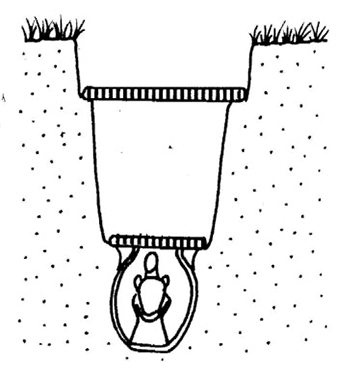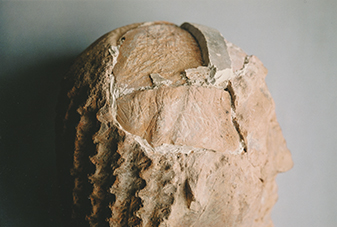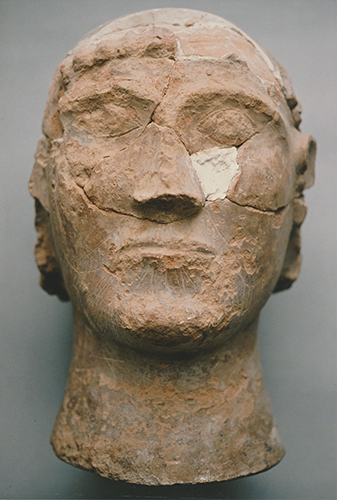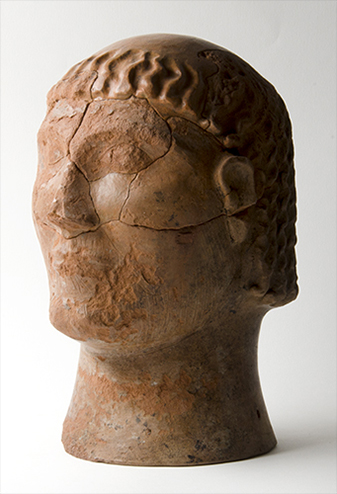conservation and restoration of an Etruscan canope
origin: the area of Chiusi, Etruria (Italy)
date: 6th century BC
introduction
Canopes (figures 1 and 3) are anthropomorphic ash urns, exclusively found in the area of Chiusi (Etruria, Italy). They appear from about 650 to 480 BC.¨Canope¨ as a term is derived from Egyptian Canopes in which context it has a different meaning. In Egypt canopes were used to store the intestines of mummies. They should not be considered ash urns like the examples in Etruria.

De The Etruscan canopes appeared in tombs a ziro (figure 2). A ziro is a large storage jar (dolium) placed in the ground. The canope is often placed on a ¨throne¨ made of bronze or fired clay. Around the throne the burial gifts are displayed. In a metaphorical sense the deceased participates in a funeral repast. The positioning of the deceased on a ¨throne¨ is interpreted as a form of exaltation. Canopes should not be considered portraits, but types. Based on the burial gifts, usually consisting of household goods, canopes can be dated.
The general opinion is that canopes evolved from the so called Villanova ash urns. Villanova urns wear a lid in the shape of a helmet. Both male and female types are found. Until now it is not clear why canopes only appeared in the Chiusi area. Though anthropomorphic ash urns have a rich tradition in the Neolithic in Troy, Anatolia, the Balkan area and northern Greece, a connection is not possible due to a gap of almost 2000 years. We have to assume that the canopes of Chiusi are an independent phenomenon.
condition before treatment
In the past, our canope had been reconstructed by means of shellac. The shellac turned dark due to aging and cross linking. The incomplete object had been supplemented with reshaped fragments of tiles as well as plaster of Paris (figures 3 and 4: during dismantling). The plaster had been painted, however this was hardly convincing in matching the colour of the fired clay.

A chemical test gave information about the hazardous presence of soluble salts in the ceramic. This presence is possibly underlined by local flaking of the polished clay surface. Traces of migrated salts were detectable on the surface.
treatment
The salts present in the clay posed a serious threat to the condition of the canope. The existing reconstruction was unwanted from an esthetical and constructive point of view. The object has been taken apart and the fragments have been desalinated. In the next stage the fragments have been stabilized by means of impregnation with a consolidant (Paraloid B72). Finally, the reconstruction was completed with plaster of Paris in the lacunas. Afterwards the inlays were painted in a tone that matched closely the natural color the fired clay. Inevitably the impregnation slightly darkened the clay. The painted inlays are distinguished easily from the original ceramic by a difference in luster.
literature
• Gempeler, R. D.; Die Etruskischen Kanopen; Herstellung, Typologie, Entwicklungsgeschichte; Bern, 1970
• Mansuelli, G.; Etrurien und die Anfänge Roms; 1963
• Meer, L.B. van der; Un canopo etrusco nel Rijksmuseum van Oudheden di Leida; Festoen, 1975



